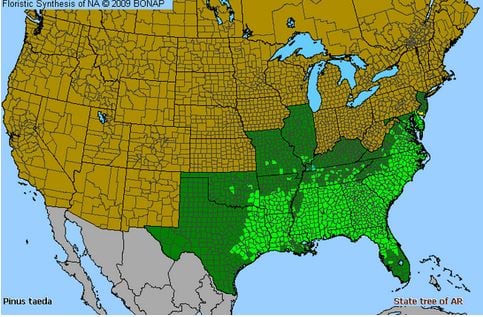2 min read
Is Southern Yellow Pine Good for the Economy?
Southeastern Lumber Manufacturers Association : October 12, 2020

This post is republished courtesy of our friends at the Southeastern Lumber Manufacturers Association and “Wood. It’s Real,” which raises awareness for Southern Yellow Pine as a leading building material.
It’s easy to pick up some Southern Yellow Pine 2x4s for your weekend project, but do you know where your dollars are going? You might be surprised to know that there’s a big business behind your wood, and the lumber industry is actually one of the largest in th e United States.
e United States.
Though the wood products industry as a whole makes use of many tree species, one of the hardiest and most versatile is Southern Yellow Pine–affectionately known as SYP. SYP is a catch-all name for several yellow pine species that grow mostly throughout the Southeastern US. The wood industry in general, and the Southern Pine sector in particular, represents an economic generator that’s quietly creating millions of jobs and billions of dollars in revenue.
Jobs, Jobs and More Jobs
The US Southeast region is the largest supplier of wood in the world, thanks in large part to the Southern Yellow Pine industry. For geography buffs, there are 12 states that do the heavy lifting in SYP production: Alabama, Arkansas, Florida, Georgia, Kentucky, Louisiana, Mississippi, North Carolina, South Carolina, Tennessee, Virginia and West Virginia. These states boast quality jobs in the following areas:
- Primary Production: Forestry, sawmill operations, wood extracting and log milling
- Secondary Production: Wood products manufacturing, including furniture, cabinets, millwork, flooring, decks, toys, playground equipment, garden structures and wood products like pulp and paper
- Suppliers of Lumber Products and Services: Businesses supplying machinery and supplies like CNC routers, edgebanders, veneers, flooring, wood panels, hardware and soft goods like upholstery
The forestry and lumber industry are a big part of state and local economies, providing much-needed employment in rural areas. This industry also creates upstream and downstream jobs related to wood, such as machine designing, marketing, machine operations and manufacturing plant supervision.
Major Economic Impacts
Southern states with competitive SYP lumber production capacity reap enormous benefits from this industry, as the number of jobs created both directly and indirectly in the wood products and forestry sector is tremendous. Georgia’s forest industry, for instance, is responsible for creating over 148,000 jobs (direct and indirect) while generating roughly $1 billion in tax revenue.

Loblolly Pine distribution map from PollenLibrary.com
Even better: Every one of the dozen Southeastern states producing SYP lumber does over a billion dollars in wood shipments each year. That’s a healthy business for the region, and one that contributes significant added value to state economies. The Georgia Forestry Association put the total state economic impact of its vibrant forest industry at $36.2 billion!
Even though Georgia is the top exporter of pulp, paper, and paperboard mill products in the country, the state has experienced a net increase in overall tree volume since 1953.
- Georgia’s forest area has remained stable over the past 50 years at roughly 24 million acres
- Approximately 91% of this acreage is privately owned (Georgia has more privately-owned acres of timberland than any other state in the nation)
- Forest growth exceeds removals by 41% annually
Planting and growing more trees is crucial to keeping forestland forested, and for supplying the vibrant wood products industry throughout the Southeast. As such, Southern Pine is a sound investment in our shared environment, as well as one that supports regional and rural economies.
On a nationwide scale, the impact of the wood products industry on rural areas is particularly important. Across the US, softwood lumber manufacturing is associated with more than 775,674 jobs and $46 billion in payroll. The 509 sawmills in operation in this country are found in mostly rural areas in 32 states, providing work opportunities in places where good jobs are often hard to come by.





